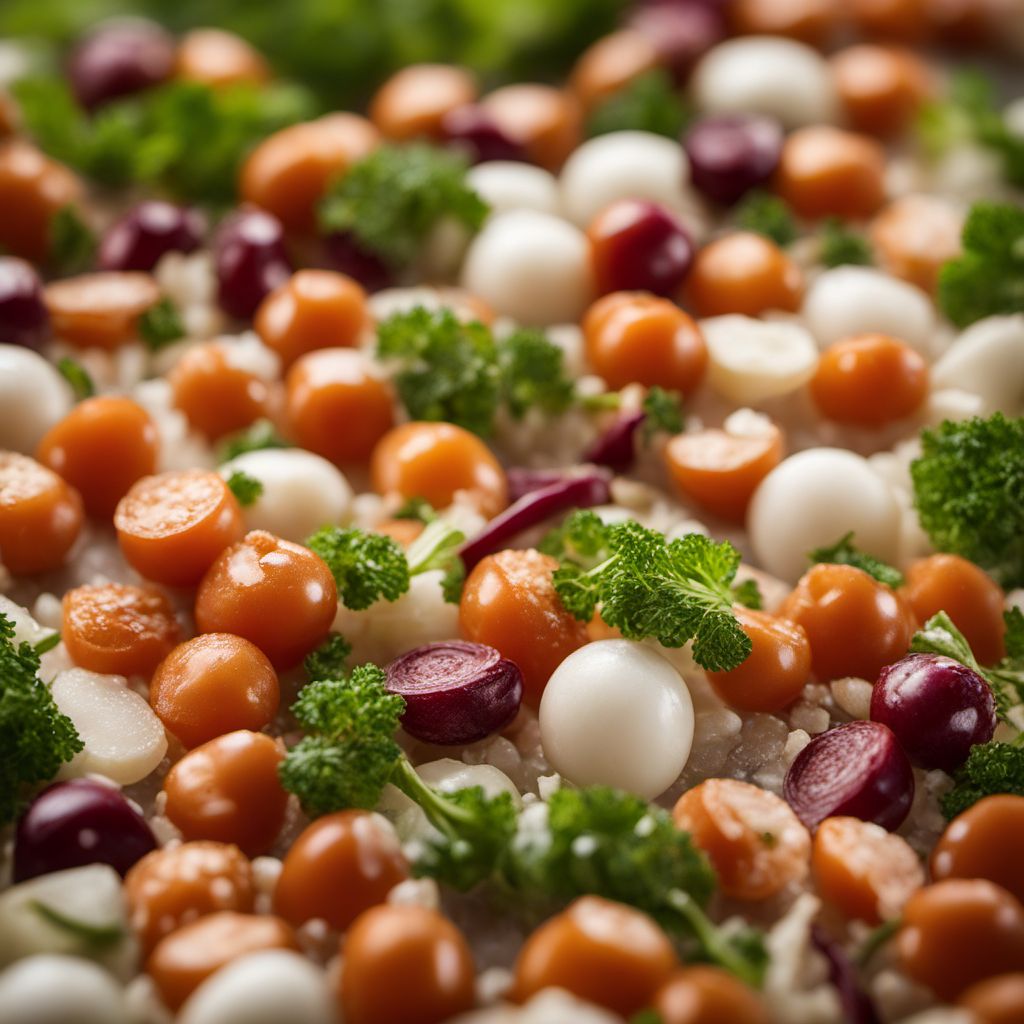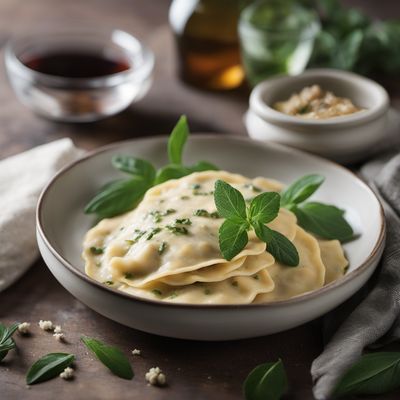
Ingredient
Salted vegetables
Savory Preserved Delights
Salted vegetables are vegetables that have been preserved through the process of fermentation or pickling with salt. This preservation method not only extends their shelf life but also imparts a distinct savory and tangy flavor. They can range from crunchy and tangy to soft and briny, depending on the specific vegetable and preparation technique. Salted vegetables are commonly used in Asian cuisines, such as Korean kimchi, Chinese salted mustard greens, and Japanese tsukemono.
Origins and history
The tradition of salting and preserving vegetables dates back centuries and is found in various cultures around the world. In ancient times, salting vegetables was a way to preserve the harvest and ensure a food supply during leaner months. Today, salted vegetables continue to be an integral part of many culinary traditions, offering a unique taste and texture to dishes.
Nutritional information
Salted vegetables are low in calories and fat, making them a healthy addition to meals. They are also a good source of dietary fiber, vitamins, and minerals. However, their sodium content can vary depending on the specific vegetable and preparation method, so it's important to consume them in moderation, especially for individuals with high blood pressure or sodium-sensitive diets.
Allergens
May contain allergens such as soy, fish, or shellfish depending on the specific recipe and preparation method.
How to select
When selecting salted vegetables, look for products that are well-preserved and free from signs of spoilage, such as mold or off-putting odors. Opt for brands that use high-quality vegetables and natural fermentation or pickling processes. If possible, choose organic options to minimize exposure to pesticides or chemical additives.
Storage recommendations
To maintain the quality and flavor of salted vegetables, store them in a cool and dark place, such as a refrigerator or cellar. Keep them in airtight containers or jars to prevent moisture and air exposure, which can lead to spoilage. Use clean utensils when handling to avoid contamination.
How to produce
Producing salted vegetables at home requires knowledge of fermentation or pickling techniques. It is a time-consuming process that involves salting the vegetables, allowing them to ferment or pickle, and then storing them in a cool place. It is recommended to follow tested recipes or seek guidance from experienced home cooks or fermentation experts to ensure safety and optimal results.
Preparation tips
Salted vegetables can be used in a variety of dishes and cuisines. They can be enjoyed as a side dish, added to stir-fries, soups, stews, or used as a flavoring agent in sauces and marinades. Incorporate them into rice dishes, noodles, or salads for an extra burst of flavor. Experiment with different combinations to find your favorite pairing.
Culinary uses
Salted vegetables are commonly used in Asian cuisines, particularly in dishes from China, Korea, and Japan. They are essential ingredients in dishes like kimchi, bibimbap, hot pot, and miso soup. However, they can also be found in other cuisines around the world, where they add a unique savory element to various recipes.
Availability
Salted vegetables are commonly available in Asian grocery stores, specialty food markets, and some larger supermarkets. They can also be purchased online from specialized retailers or directly from local producers. The availability may vary depending on the region and demand.
More ingredients from this category

Canned/jarred vegetables
Preserved Garden Goodness: Unlocking the Flavorful World of Canned/Jarred Vegetables

Dried vegetables
Preserving Nature's Bounty: Exploring the World of Dried Vegetables

Processed tomato products
The Versatile World of Tomato Transformations

Fermented or pickled vegetables
Tangy Delights: Fermented and Pickled Vegetables

Candied or sugar preserved vegetables
Sweet and Savory Delights: The Art of Candied or Sugar Preserved Vegetables

Vegetable puree or paste
Versatile Veggie Blend
Recipes using Salted vegetables » Browse all

Grilled Lamb with Mediterranean Flavors
Savor the Taste of Croatia: Grilled Lamb with a Mediterranean Twist

Dorset Delight Moin Moin
Savory Steamed Bean Cakes with a Dorset Twist

Daheen alla Toscana
Tuscan-inspired Creamy Daheen Delight

Homemade Pheasant Ravioli with Sage Butter Sauce
Savory Delight: Handcrafted Pheasant Ravioli in Fragrant Sage Butter

Saltimbocca alla Romana with a Twist
Savory Sage and Prosciutto Chicken Rolls

Lombard-style Potato Dumplings
Savory Lombard Delights: Potato Dumplings Lombardia-Style

Casoncelli alla Bergamasca
Savory Delights: Casoncelli - A Taste of Bergamo

Sage and Mushroom Risotto
Creamy Mushroom Risotto with a Hint of Sage

Bibingka with a Twist
Coconut Delight: A Modern Twist on Traditional Bibingka

Homemade Pumpkin Tortelli
Autumn Delight: Homemade Pumpkin Tortelli with a Creamy Sage Sauce

Boudin Blanc de Liège with Apple and Sage
Savory Delight: Apple and Sage Boudin Blanc de Liège

Homemade Mushroom and Ricotta Agnolotti
Savory Delights: Mushroom and Ricotta Agnolotti - A Taste of Italian Elegance